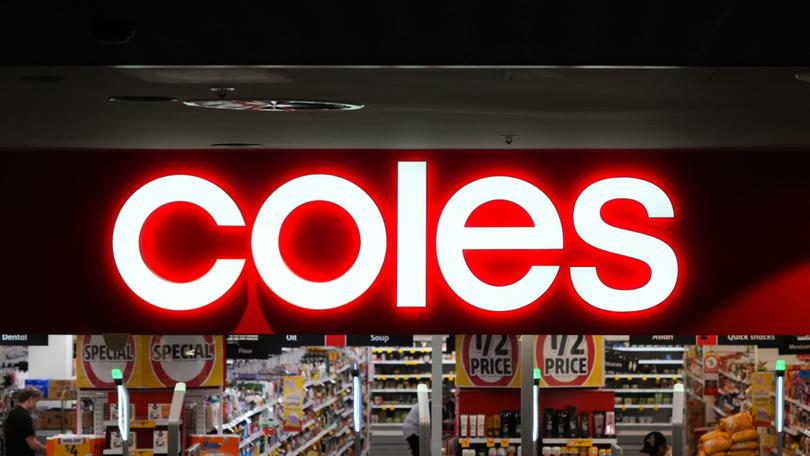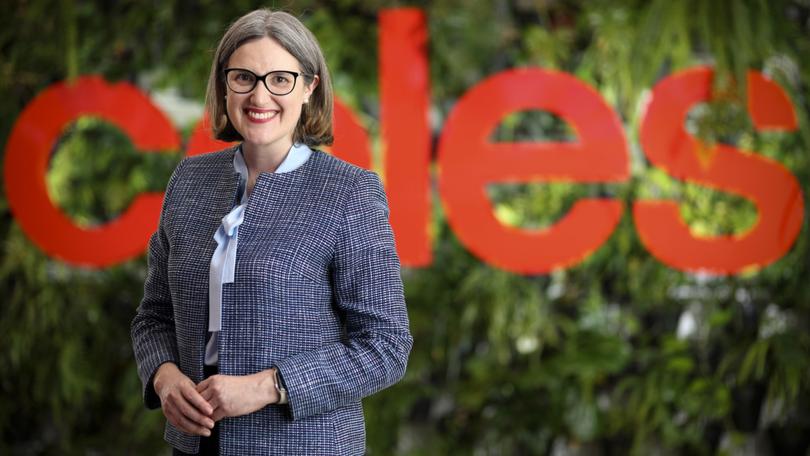Coles profit up 2.1pc in 2024 as under-pressure consumers choose to cook at home rather than eat out

Almost 90 per cent of Coles customers have changed what they buy in response to persistent cost-of-living pressures, as many look to cook and eat at home rather than eating out.
The retailer, in reporting full-year results on Tuesday, noted inflation for fresh food, including bread and dairy, was easing, which was providing some relief at the register.
“To minimise spend, customers continue to eat more at home, cut back on treats (and) eat less red meat,” Coles chief executive Leah Weckert said.
Sign up to The Nightly's newsletters.
Get the first look at the digital newspaper, curated daily stories and breaking headlines delivered to your inbox.
By continuing you agree to our Terms and Privacy Policy.“We know that cost of living is very challenging for many families right now, so it’s an important national conversation ... How do we all play our part in impacting and reducing that impact on families around the country?
“We have worked hard to do our part in terms of providing value to customers, to reduce the cost of the basket for them.”
This pullback was also being seen at liquor brands Liquorland, First Choice Liquor and Vintage Cellars. Beer sales were on the rise due to its affordability while champagne was being switched for items like Prosecco, Ms Weckert said.
Over the year more than 1100 new products were launched, and Coles has also reported moderating inflation across the supermarket product range.
Almost 90 per cent of customers had made changes to buying habits, the chief executive said.
“We know they are cutting back on treats, they’re eating less meat,” she said.
“We are seeing them moving into more affordable brands ... they’re willing to travel to go and get the best prices.”
Ms Weckert, a long-term Coles executive who has been CEO since May last year, said the company’s extensive consumer research showed two-thirds of customers were worried about their ability to cover rising costs — particularly mortgages and rent, insurance, education and fuel as well as groceries.
“We’re seeing really good growth in volume, and that’s really being driven by a lot of Australians choosing to eat out less and eating at home more, and they’re looking to replicate some of the experiences that they would have had when they were eating out — by buying products that might be a little more premium or a little more special when they come into shop with us,” she said.
Ms Weckert also promised continued innovation in house brands, with sales growth rates more than double that of proprietary brands.
“We will continue to invest and look to bring new, innovative products into that range,” she said.
Ms Weckert said it was positive shoppers could shift their spending habits in-store given there were so few options for them to do so for other high costs — their mortgage, insurance, petrol or education for children.
Coles reported its sales revenue had grown 3.7 per cent in the first eight weeks of the 2025 financial year. The company noted increasing sales momentum, which it attributed to value campaigns around specials and its “winter of sports” campaign.
Sales growth was particularly noticeable in convenience meals and Coles Finest range, which includes premium products at often cheaper prices than brand-label products.
Liquor sales over the same period fell 1.4 per cent, with much of the blame attributed to the Cloud Strike IT outage in July. That impact notwithstanding, sales would have fallen 0.3 per cent, with Coles suggesting overall liquor retailing was challenging and it was moving away from less profitable sales like bulk sales.

Over the 2024 financial year, Coles posted a post-tax profit of almost $1.12 billion in the 2024 financial year, down 4 per cent year-on-year when discontinued operations like its range of petrol stations were included — though that sale to Viva Energy was completed more than 12 months ago.
When excluded, and the results were normalised across a 52-week year (the 2024 financial year had 53 weeks), Coles’ post-tax profit was up 4.1 per cent to $1.21b, and 2.1 per cent when the costs of infrastructure projects for customer fulfilment centres and automatic distribution centres were included.
Supermarkets were again Coles’ strongest result, with sales revenue on a normalised basis up 4.3 per cent to just over $39b — and by 2.6 per cent in the fourth quarter of the financial year. Compared to two years ago, sales in the fourth quarter jumped 10.8 per cent.
The results overall were above analyst expectations and the sales outlook for the 2025 financial year was strong, UBS analyst Shaun Cousins said.
